Oxyporus populinus
Scientific name: Oxyporus populinus (Schumach.) Donk
Derivation of name: Oxyporus means "polypore with a
sharp, acid taste"; populinus means " inhabiting poplar
(Populus) trees."
Synonymy: Polyporus populinus Schum.: Fr.; Fomes
connatus (Weinm.) Gill.
Common names: Mossy maple polypore, mossy cap
polypore.
Phylum: Basidiomycota
Order: Hymenochaetales
Family: Schizoporaceae
Occurrence on wood substrate: Parasitic; solitary, in groups,
or in vertical overlapping clusters on trunks of living deciduous
trees, especially maple; year-round.
Dimensions: Caps 3-21 cm wide.
Upper surface: Whitish to grayish; finely hairy; covered with
moss on older specimens.
Pore surface: White to cream; pores 4-7 per mm.
Comments: This perennial polypore, despite its specific
epithet populinus, is usually found near the base of living
maples, not poplars.
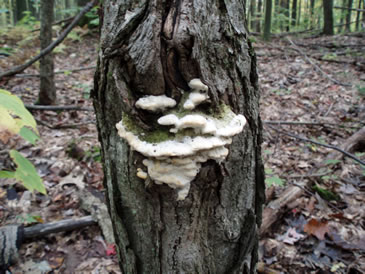
Figure 1.
Oxyporus populinus most often occurs as a series
of overlapping white shelves with moss growing on the upper
surfaces. Photo © Don Davis.
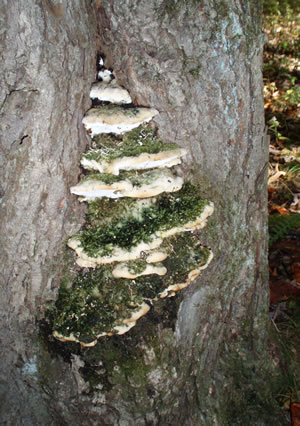
Figure 2. Mossy maple polypore is often found near
the base of trunks of infected maple trees. The fungus
is often in (or close to) wounds or cracks.
Photo © Don Davis.
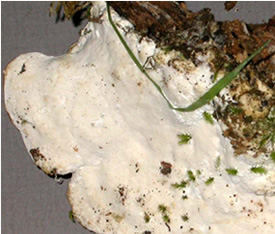
Figure 3. The pore surface is white and the pores
are small. As a result, the pore surface looks almost
nonporoid. Photo © Gary Emberger.
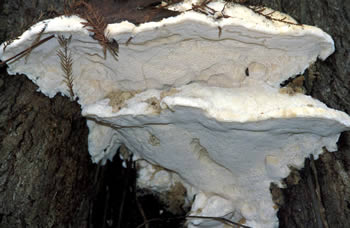
Figure 4. This perennial fungus adds a new layer of white
tubes each year. Up to 20 layers of tubes can be
present,
giving
older shelves a very thick appearance.
Photo © Larry Grand.
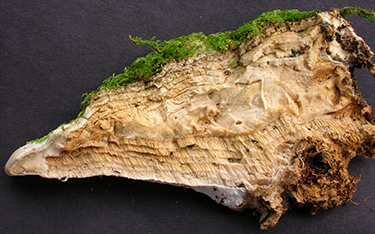
Figure 5. This detached, broken open specimen reveals
multiple tube layers below the thick context tissue.
Photo © Gary Emberger.
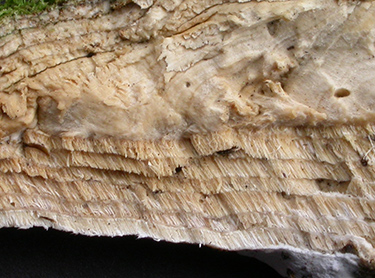
Figure 6. A close-up of Figure 5 shows six tube layers on the
the left and seven tube layers on the
right. The specimen is at
least
seven years old.
Photo © Gary Emberger.
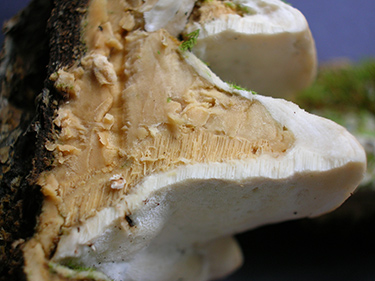
Figure
7. A two-year old specimen.
Photo © Gary Emberger.
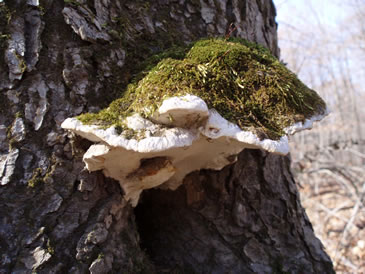
Figure 8. This is why the fungus is sometimes called the
mossy maple polypore. The upper surface of Oxyporus
populinus is apparently ideal for moss spore germination and
growth. Photo © Don Davis.
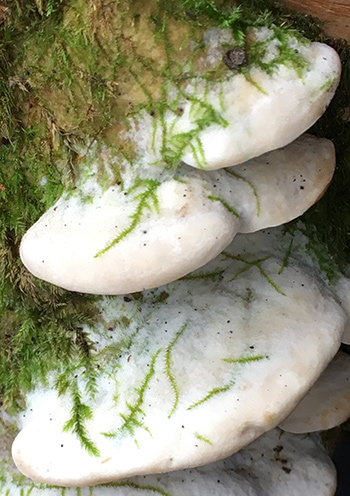
Figure
9. Young moss plants colonizing the surface of a
mossy maple polypore. Photo © Gary Emberger.
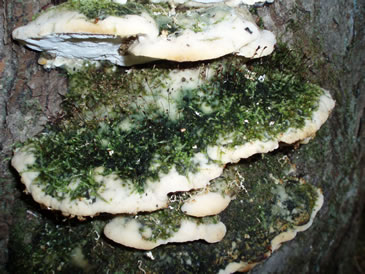
Figure 10. Ten different moss species and two liverwort
species were found colonizing conks of Oxyporus populinus
(D. Davis & R. Pursell, 2006).
A single conk usually
supports only 1-2 species. Photo ©
Don Davis.